
The Cavendish Laboratory is the Department of Physics at the University of Cambridge, and is part of the School of Physical Sciences. The laboratory was opened in 1874 on the New Museums Site as a laboratory for experimental physics and is named after the British chemist and physicist Henry Cavendish. The laboratory has had a huge influence on research in the disciplines of physics and biology.

Magdalene College is a constituent college of the University of Cambridge. The college was founded in 1428 as a Benedictine hostel, in time coming to be known as Buckingham College, before being refounded in 1542 as the College of St Mary Magdalene.
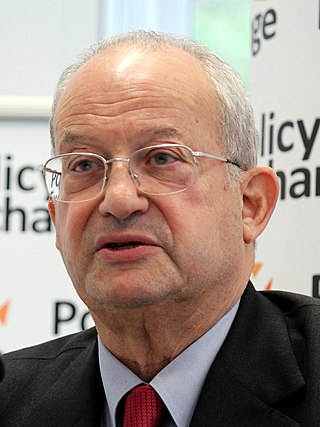
David John Sainsbury, Baron Sainsbury of Turville, is a British politician, businessman and philanthropist. From 1992 to 1997, he served as chairman of Sainsbury's, the supermarket chain established by his great grandfather John James Sainsbury in 1869.

Darwin College is a constituent college of the University of Cambridge. Founded on 28 July 1964, Darwin was Cambridge University's first graduate-only college, and also the first to admit both men and women. The college is named after one of the university's most famous families and alumni, that of Charles Darwin. The Darwin family previously owned some of the land, Newnham Grange, on which the college now stands.
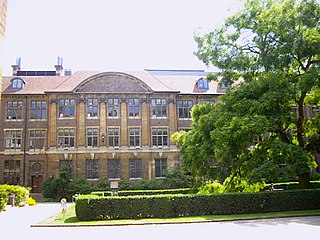
The Department of Plant Sciences is a department of the University of Cambridge that conducts research and teaching in plant sciences. It was established in 1904, although the university has had a professor of botany since 1724.

The John Innes Centre (JIC), located in Norwich, Norfolk, England, is an independent centre for research and training in plant and microbial science founded in 1910. It is a registered charity grant-aided by the Biotechnology and Biological Sciences Research Council (BBSRC), the European Research Council (ERC) and the Bill and Melinda Gates Foundation and is a member of the Norwich Research Park. In 2017, the John Innes Centre was awarded a gold Athena SWAN Charter award for equality in the workplace.
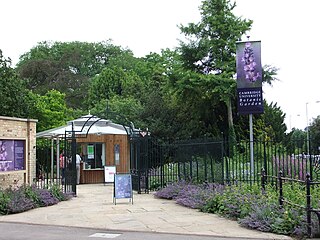
The Cambridge University Botanic Garden is a botanical garden located in Cambridge, England, associated with the university Department of Plant Sciences. It lies between Trumpington Road to the west, Bateman Street to the north and Hills Road to the east.
Elliot Meyerowitz is an American biologist.

The Harvard University Herbaria and Botanical Museum are institutions located on the grounds of Harvard University at 22 Divinity Avenue, Cambridge, Massachusetts. The Botanical Museum is one of three which comprise the Harvard Museum of Natural History.

Sir David Charles Baulcombe is a British plant scientist and geneticist. As of 2017 he is a Royal Society Research Professor. From 2007 to 2020 he was Regius Professor of Botany in the Department of Plant Sciences at the University of Cambridge.
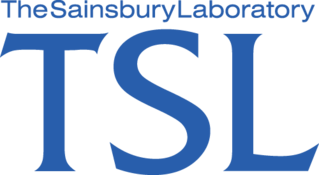
The Sainsbury Laboratory (TSL) is a research institute located at the Norwich Research Park in Norwich, Norfolk, England, that carries out fundamental biological research and technology development on aspects of plant disease, plant disease resistance and microbial symbiosis in plants.
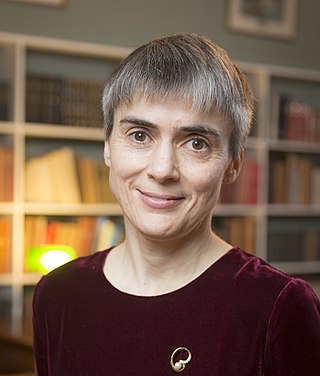
Dame Henrietta Miriam Ottoline Leyser is a British plant biologist and Regius Professor of Botany at the University of Cambridge who is on secondment as CEO of UK Research and Innovation (UKRI). From 2013 to 2020 she was the director of the Sainsbury Laboratory, Cambridge.
Stanton Williams is a British architectural firm based in Islington, London.
The Women of Outstanding Achievement Photographic Exhibition was an annual event organised by the UKRC between 2006 and 2012, when it was subsumed into the WISE Campaign awards. It comprised creative photographs of outstanding women within science, engineering and technology (SET). Between four and seven women were chosen each year to be photographed by Robert Taylor. Nominations occurred in the Autumn of each year and the recipients were announced at a ceremony in March of the following year.
Beverley Jane Glover is a British biologist specialising in botany. Since July 2013, she has been Professor of Plant Systematics and Evolution in the Department of Plant Sciences at the University of Cambridge and director of the Cambridge University Botanic Garden.
Professor John Stewart Parker is a British botanist and was the fifth Director, Cambridge University Botanic Garden, succeeding Donald Pigott.
UK Research and Innovation (UKRI) is a non-departmental public body of the Government of the United Kingdom that directs research and innovation funding, funded through the science budget of the Department for Science, Innovation and Technology.
Rachel Clare Thomson is a professor of Materials Science and Engineering, and Pro Vice Chancellor of Teaching at Loughborough University. She is known for her expertise in measuring and predicting the behaviour of materials for high temperature power generation, as well as the development of higher education and research programmes.
Barbara Ambrose is a botanist working in the field of Plant Evolutionary Developmental Biology (Evo-Devo). As the Director of Laboratory Research at the New York Botanical Garden, Ambrose is a prolific scholar and leader and mentor in her field who is interested in patterns in plant diversity on macro and micro scales.

Christopher Aidan Gilligan CBE, Sc.D. is Director of Research, Professor of Mathematical Biology and is Head of the Epidemiology and Modelling Group in the Department of Plant Sciences at the University of Cambridge. He was Head of the School of Biological Sciences at Cambridge from 2009 until 2013 and is a Fellow of King's College. He is currently a Trustee of the James Hutton Institute and is the King's Trustee of the Royal Botanic Gardens, Kew.
















